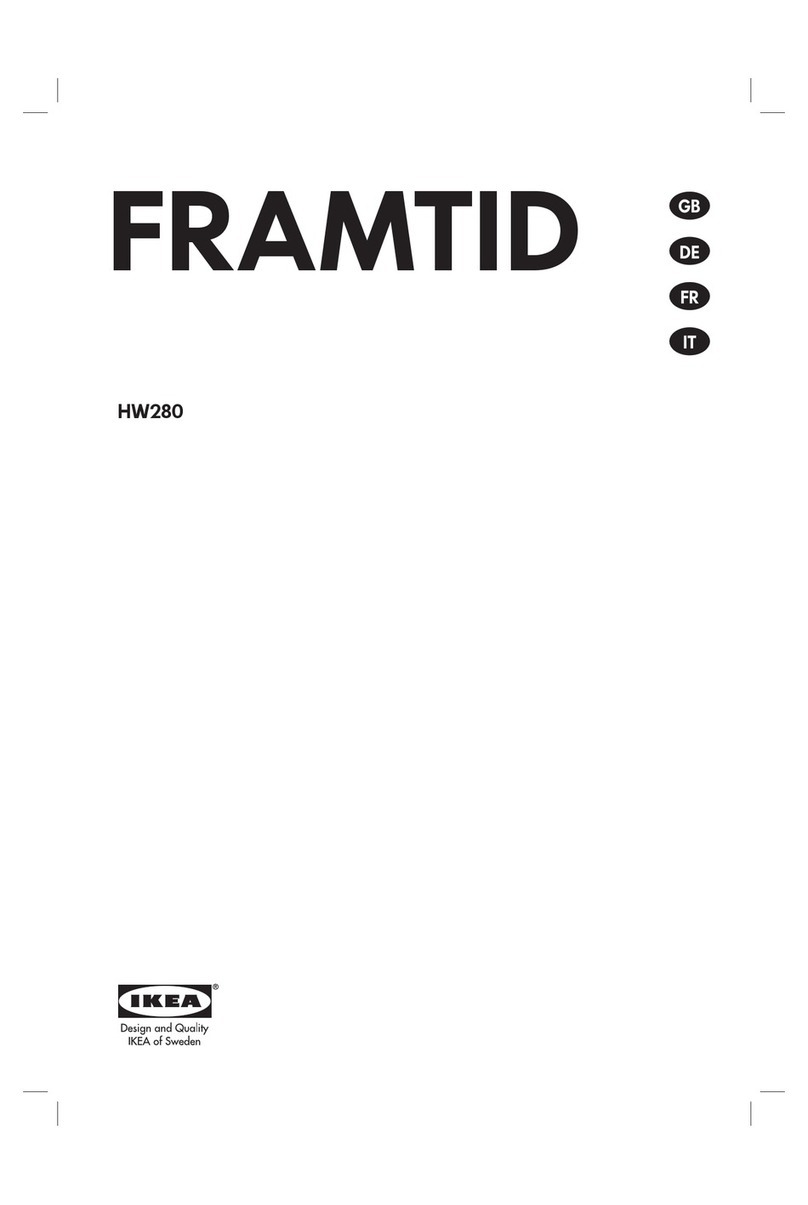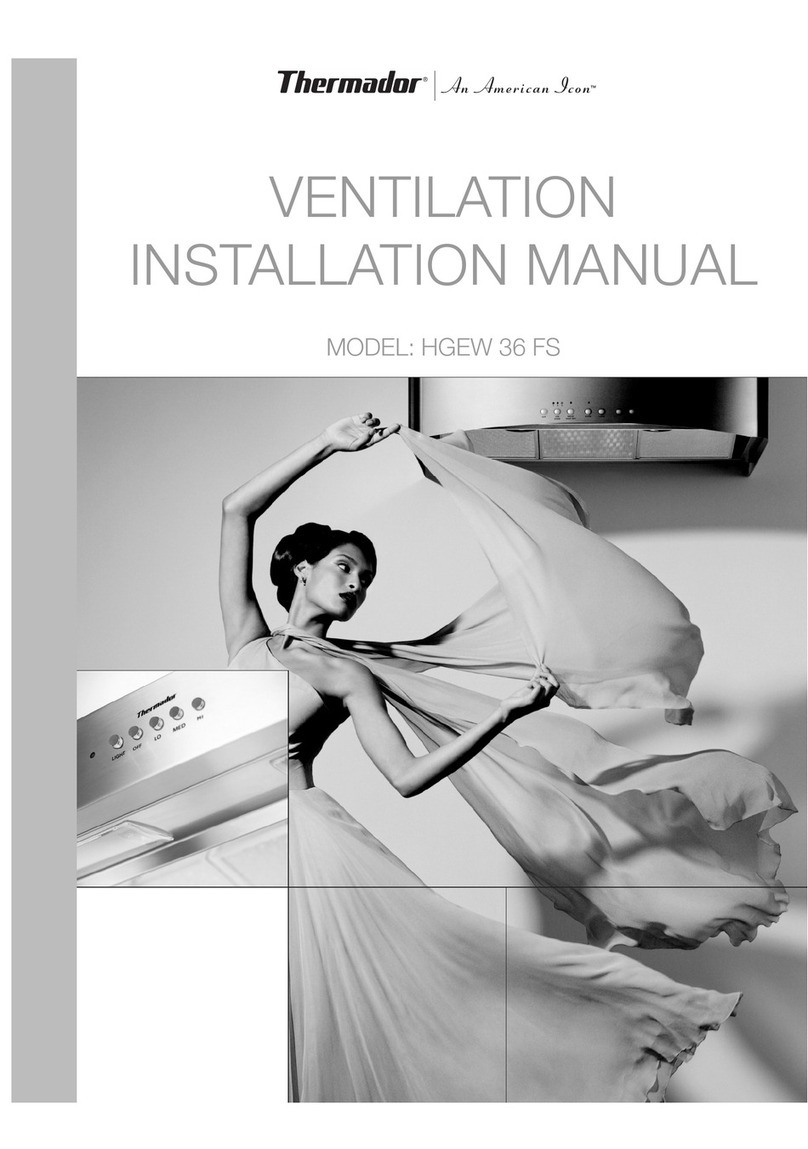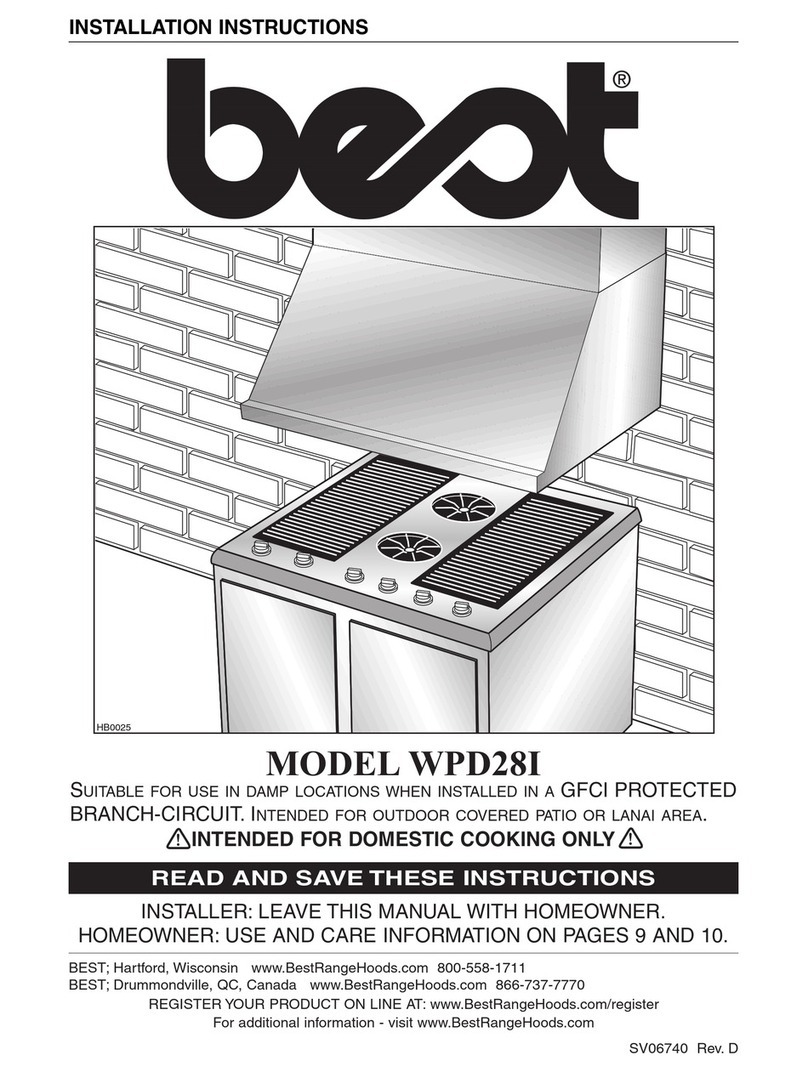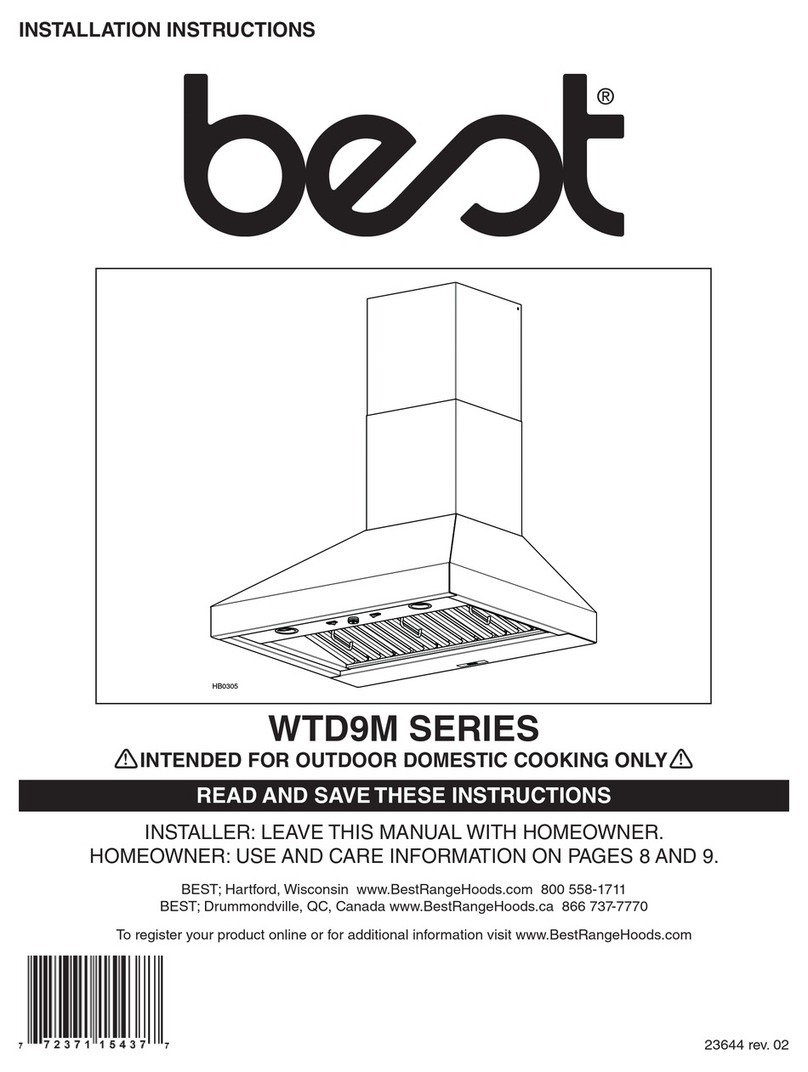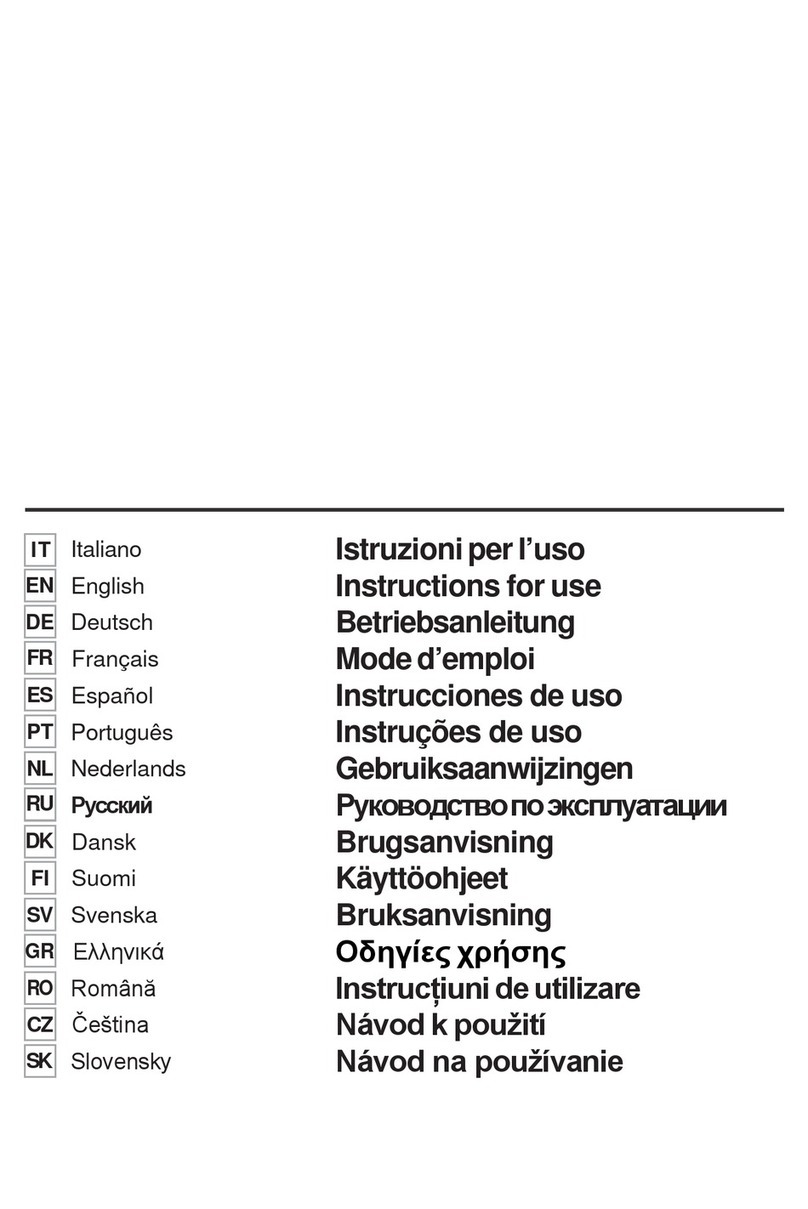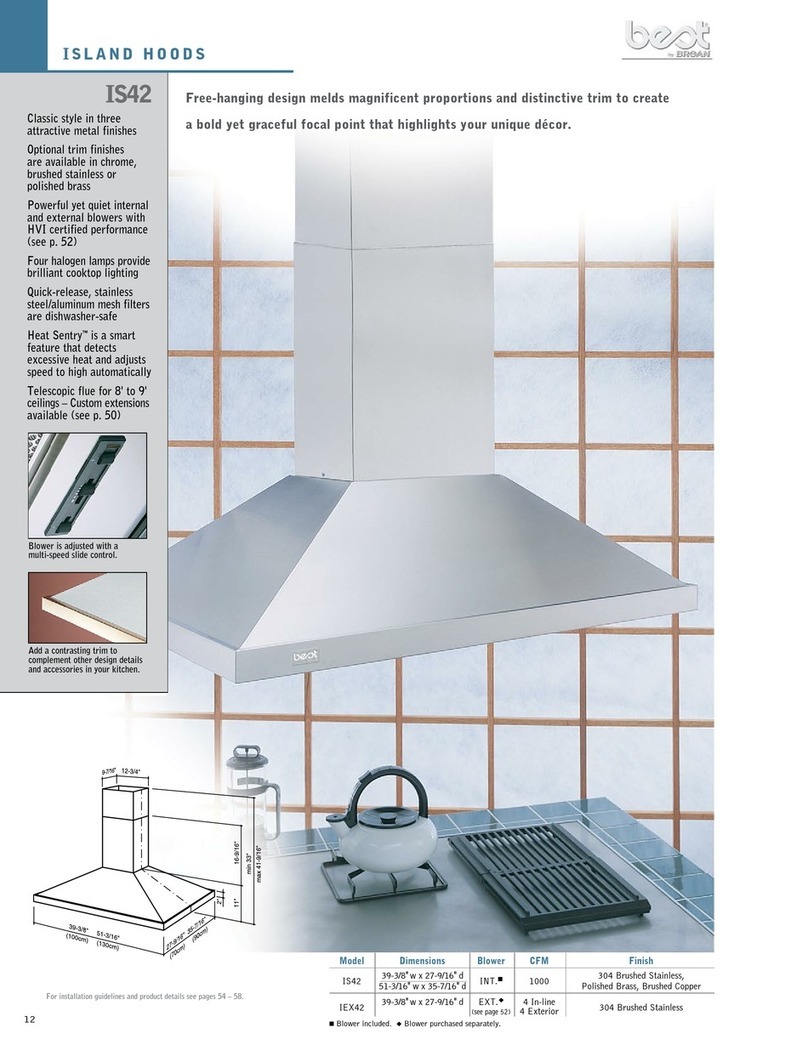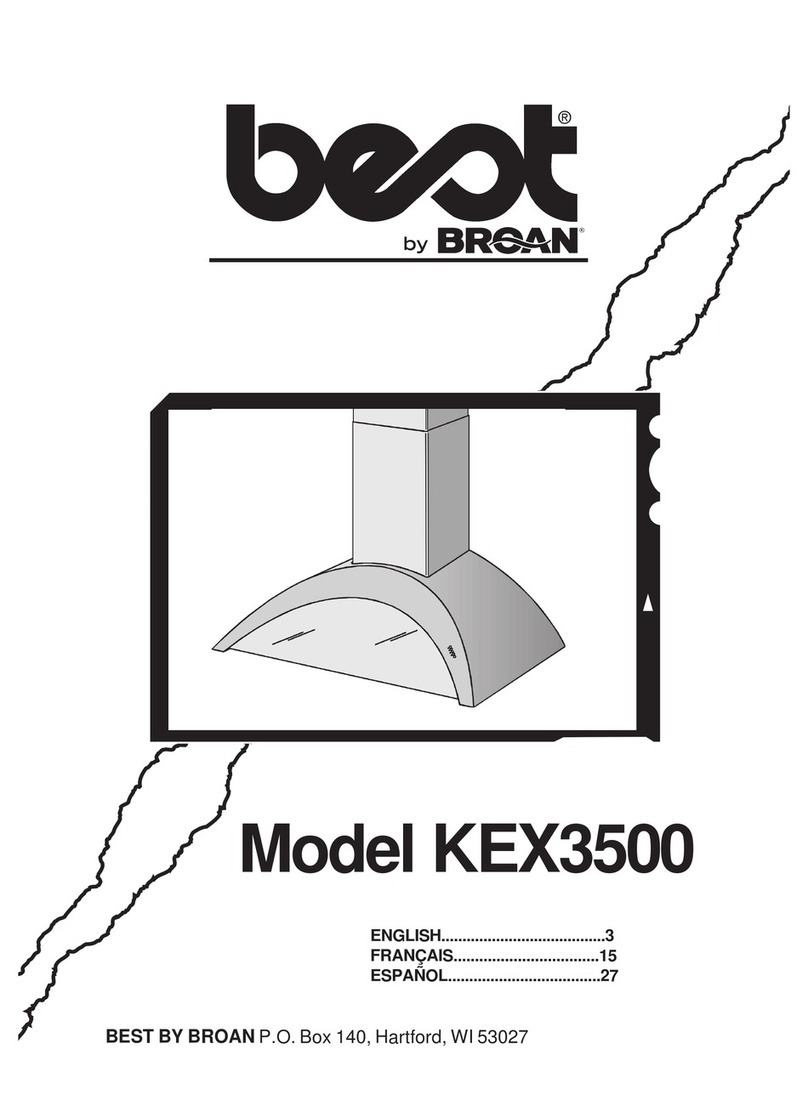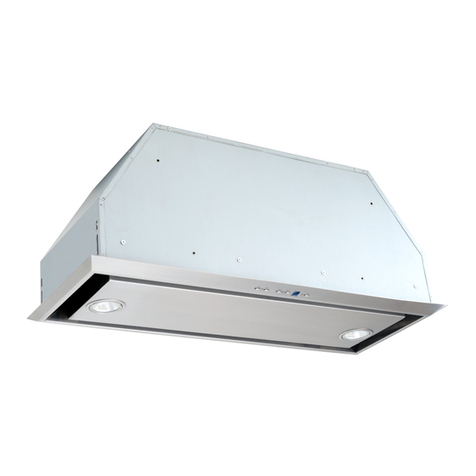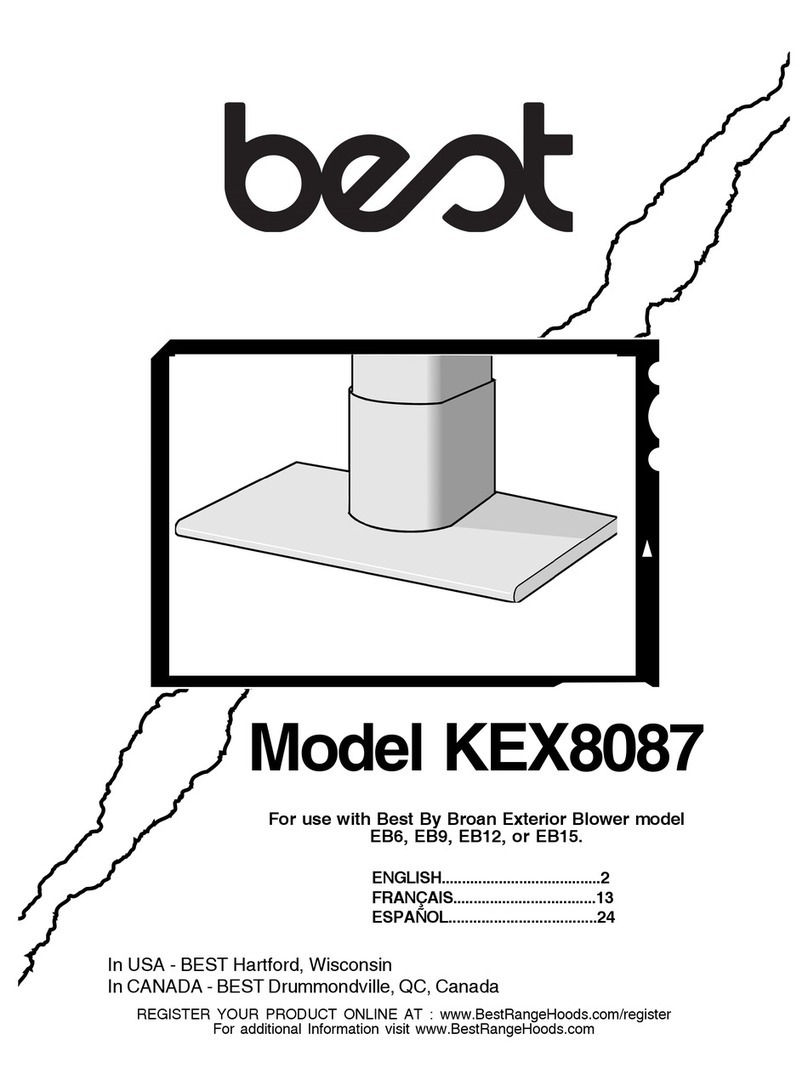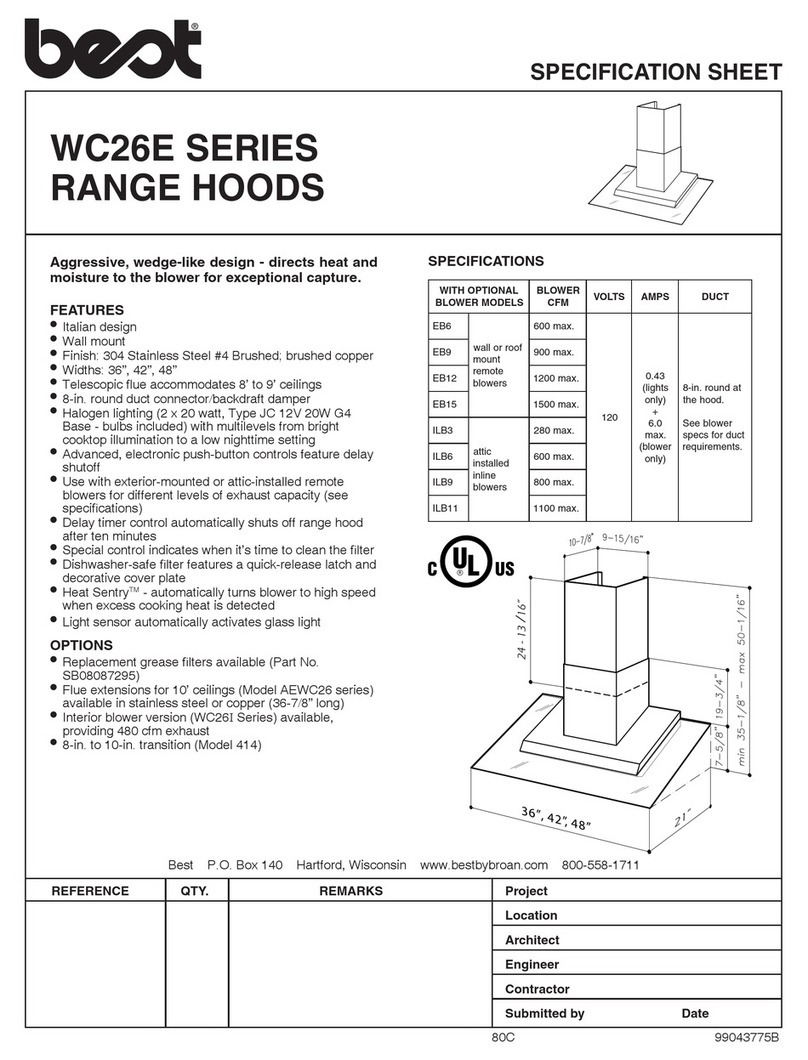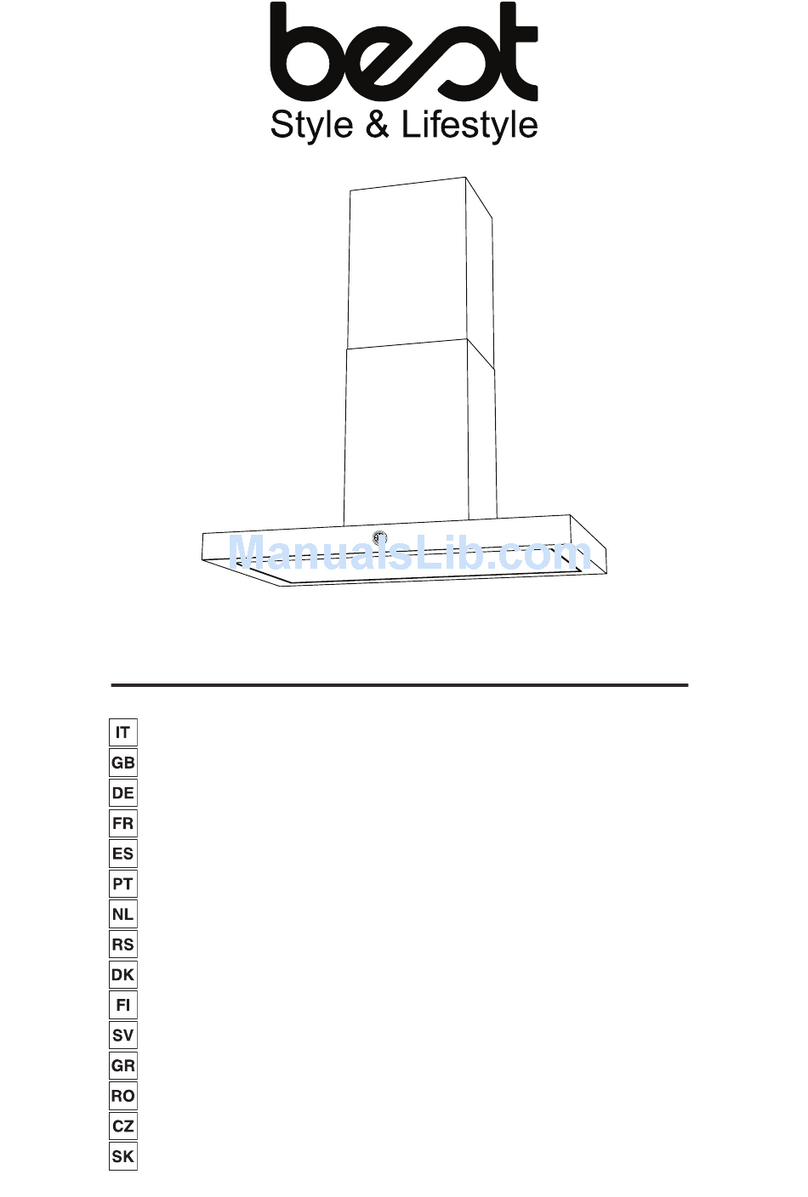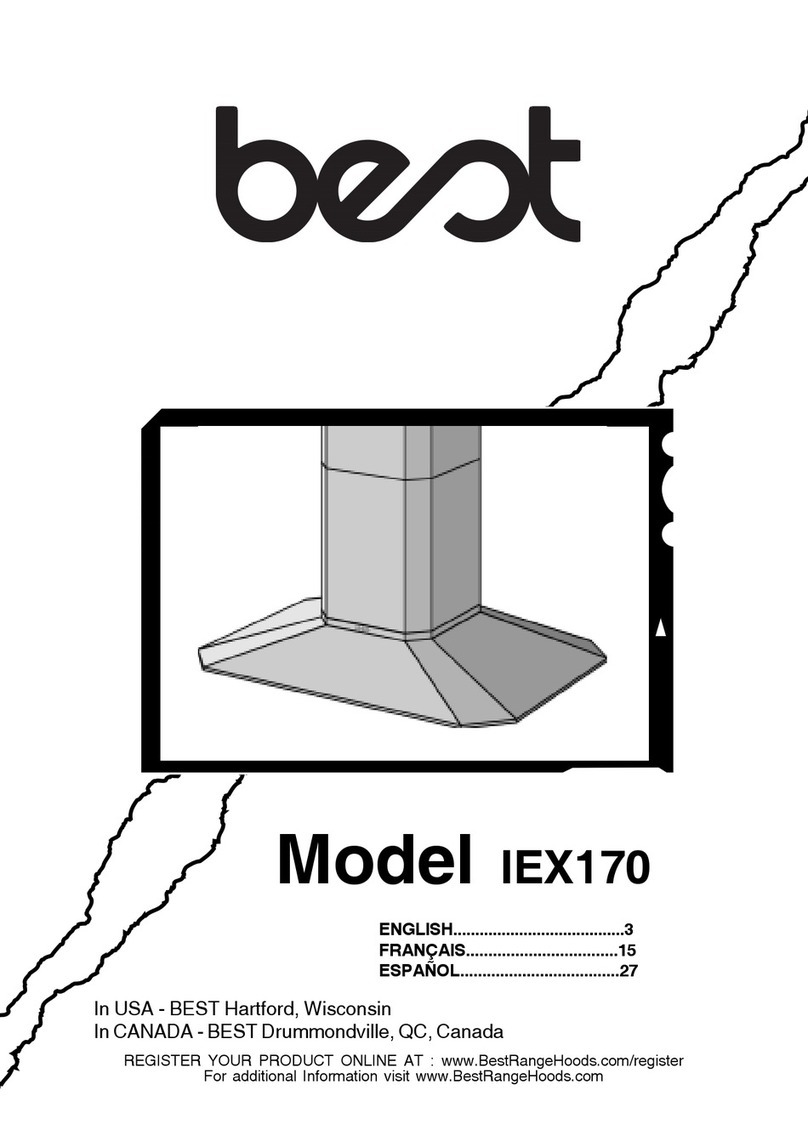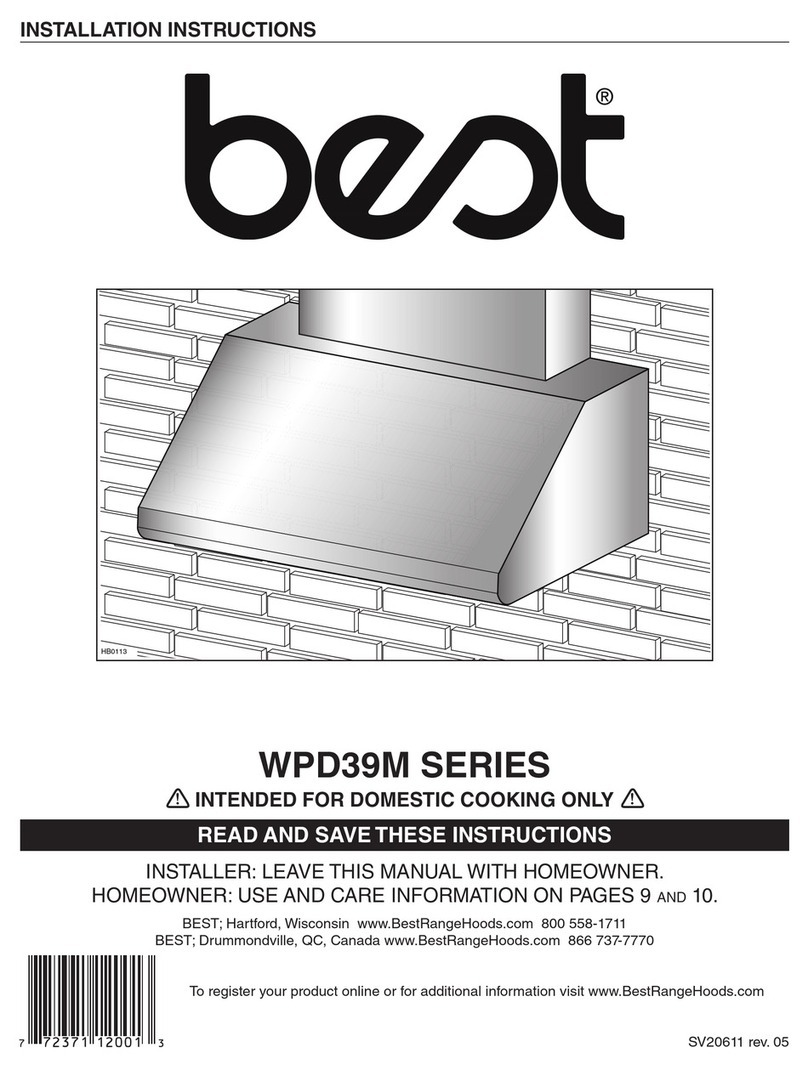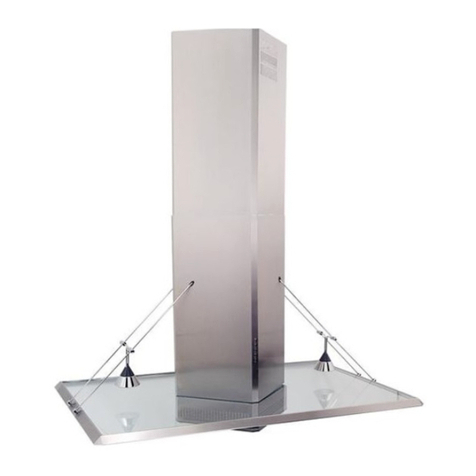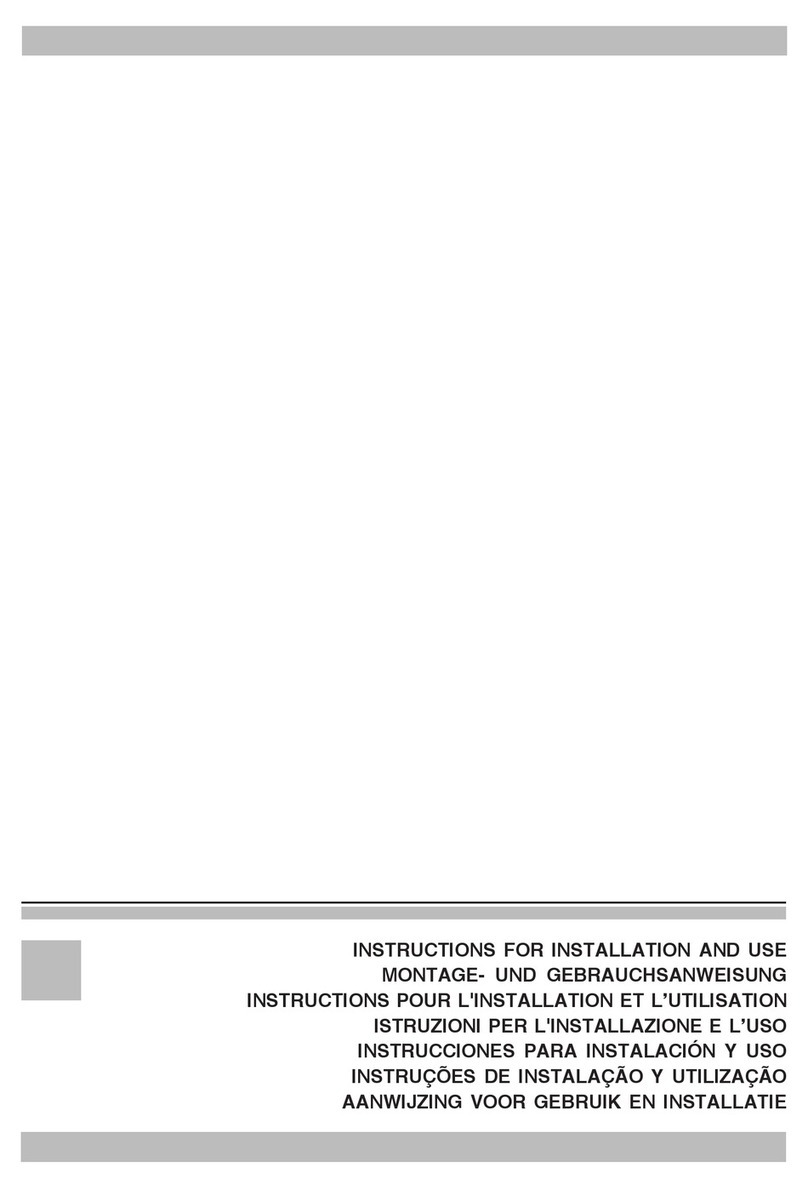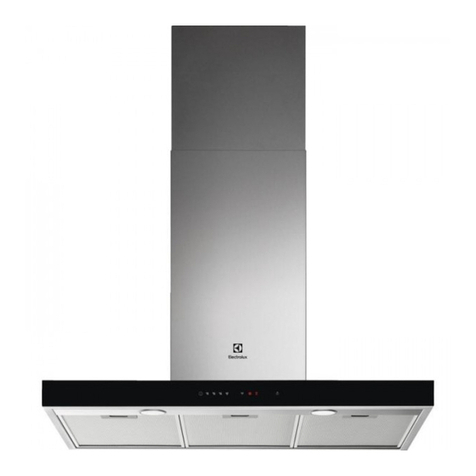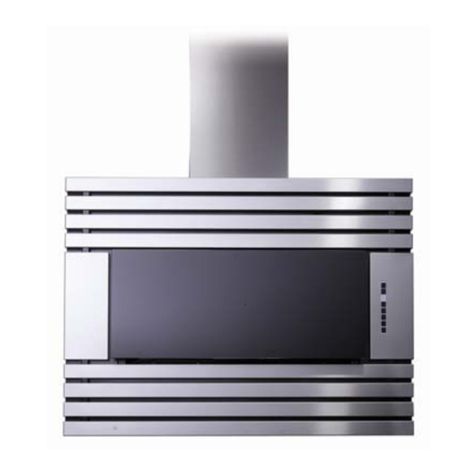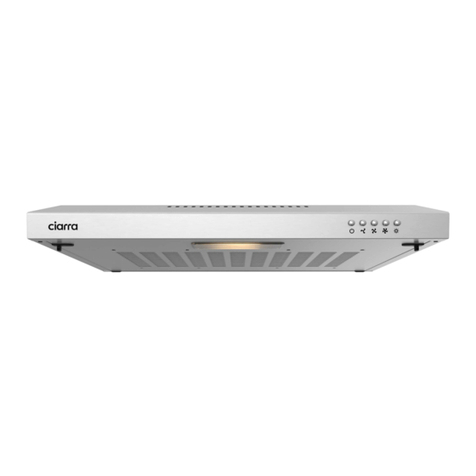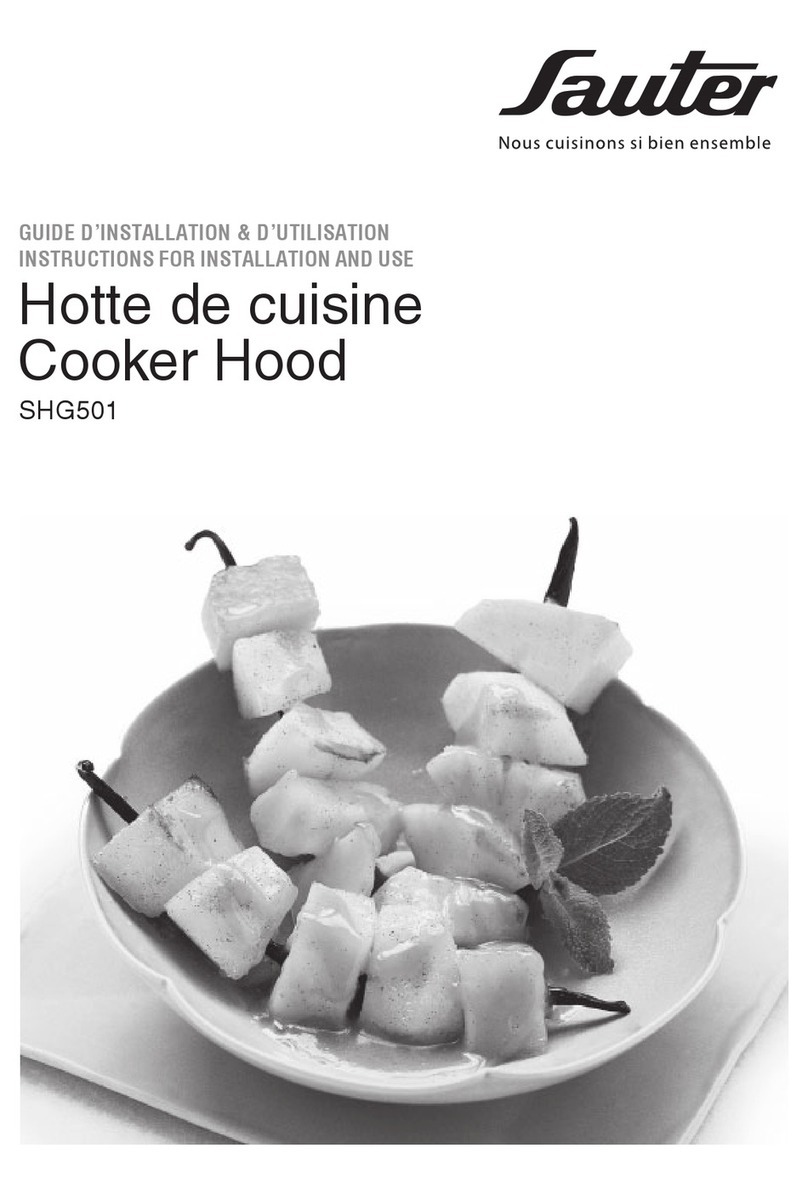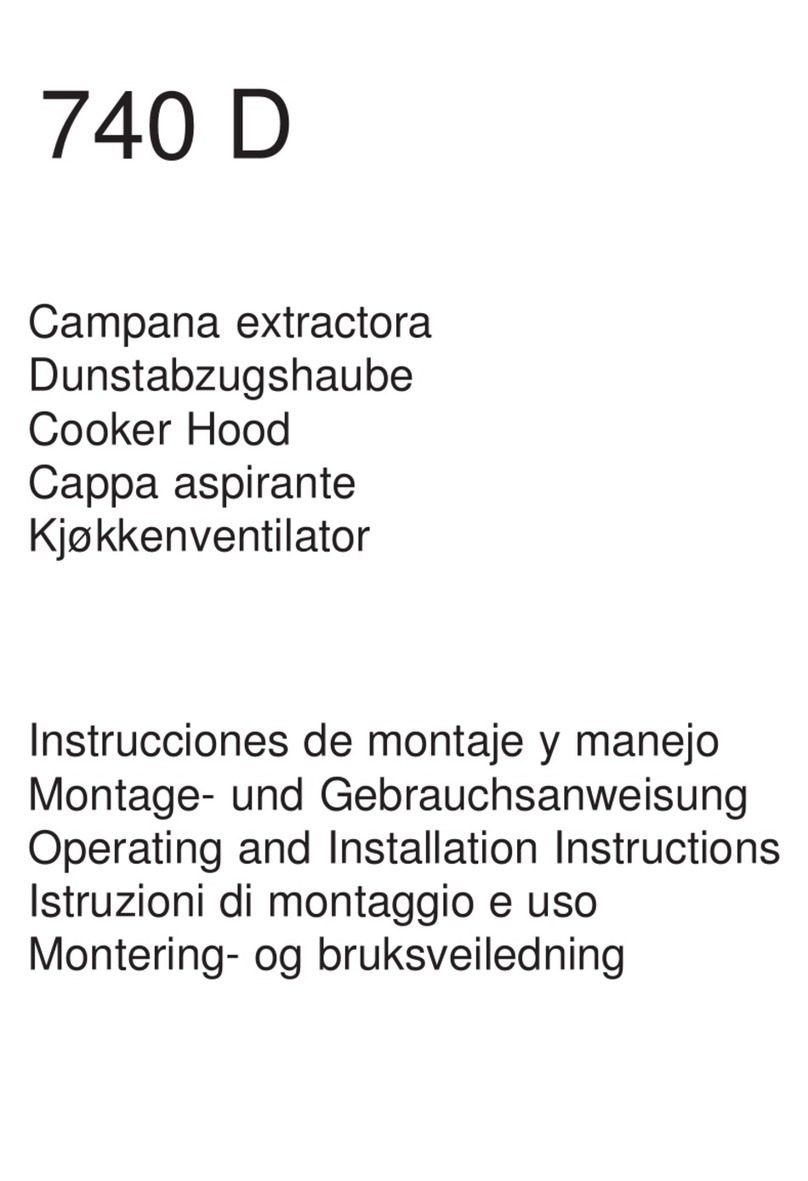
- 4 -
CAUTION
1. For indoor use only.
2. To reduce risk of re and to properly exhaust air, be sure to duct air outside. Do not vent exhaust
air into spaces within walls or ceilings or into attics, crawl spaces, or garages.
3. Take care when using cleaning agents or detergents.
4. Avoid using food products that produce ames under the Range Hood.
5. For general ventilating use only. Do not use to exhaust hazardous or explosive materials and
vapors.
6. To avoid motor bearing damage and noisy and/or unbalanced impellers, keep drywall spray,
construction dust, etc. o power unit.
7. Your hood motor has a thermal overload which will automatically shut o the motor if it becomes
overheated. The motor will restart when it cools down. If the motor continues to shut o and
restart, have the hood serviced.
8. For best capture of cooking impurities, the bottom of the hood should be a minimum of 48”and a maxi-
mum of 72”above the cooking surface. See“Install Mounting Bracket”section for mounting restrictions.
9. Multiple installers are recommended because of the large size and weight of this hood.
10. Please read specication label on product for further information and requirements.
11. To reduce the risk of re and electric shock, install this range hood only with Best Exterior Blower
Models EB6, EB9, EB12, EB15, or Best In-Line Blower Models ILB3, ILB6, ILB9 or ILB11. Other blowers
cannot be substituted. (Blowers sold separately.)
12. This power pack is equipped with a RF receiver (optional remote control sold separately). Changes
or modications not expressly approved by the party responsible for compliance could void the
user’s authority to operate this product. The remote control has been tested and found to comply
with the limits for a Class B digital device, pursuant to part 15 of the FCC Rules and the Canadian
ICES-003. These limits are designed to provide reasonable protection against harmful interference in
a residential installation. The remote control generates, uses and can radiate radio frequency energy
and, if not installed and used in accordance with the instructions, may cause harmful interference to
radio communications. However, there is no guarantee that interference will not occur in a particular
installation. If this equipment does cause harmful interference to radio or television reception, which
can be determined by turning the equipment o and on, the user is encouraged to try to correct the
interference by one or more of the following measures:
• Reorient or relocate the receiving antenna.
• Increase the separation between the equipment and receiver.
TO REDUCE THE RISK OF A RANGE TOP GREASE FIRE:
A. Never leave surface units unattended at high settings. Boilovers cause smoking and greasy
spillovers that may ignite. Heat oils slowly on low or medium settings.
B. Always turn hood ON when cooking at high heat or when ambeing food (i.e. Crepes Suzette,
Cherries Jubilee, Peppercorn Beef Flambe’).
C. Clean ventilating fans frequently. Grease should not be allowed to accumulate on fan or lter.
D. Use proper pan size. Always use cookware appropriate for the size of the surface element.
TO REDUCE THE RISK OF INJURY TO PERSONS IN THE EVENT OF A RANGE TOP GREASE
FIRE, OBSERVE THE FOLLOWING:*
1. SMOTHER FLAMES with a close-tting lid, cookie sheet, or metal tray, then turn o the burner.
BE CAREFUL TO PREVENT BURNS. If the flames do not go out immediately, EVACUATE
AND CALL THE FIRE DEPARTMENT.
2. NEVER PICK UP A FLAMING PAN - You may be burned.
3. DO NOT USE WATER, including wet dishcloths or towels - violent steam explosion will re-
sult.
4. Use an extinguisher ONLY if:
A. You know you have a Class ABC extinguisher and you already know how to operate it.
B. The re is small and contained in the area where it started.
C. The re department is being called.
D. You can ght the re with your back to an exit.
* Based on“Kitchen Fire Safety Tips”published by NFPA.




